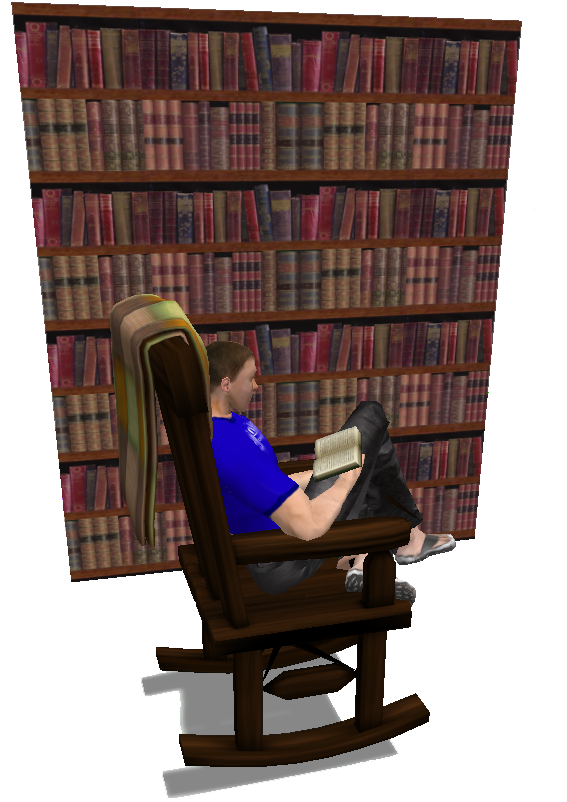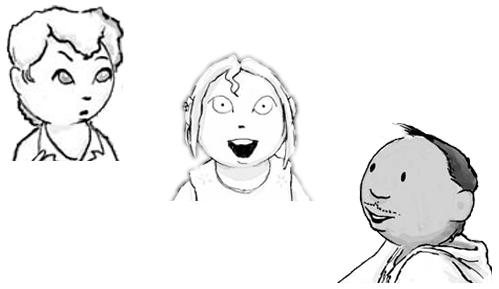Active Reading Strategies: Survey-Question-Read-Recite-Review (SQ3R)
"Survey, question, read, recite, and review" describe the steps in a study/reading method that promotes an active attitude toward learning. When you clear your mind for the task of studying, you are alert and centered. You make yourself ready to learn and remember.
Previewing or Surveying
 When reading course materials, can you anticipate what the subject matter of the text might cover? Can you anticipate what might appear on your next exam? Active reading involves specific critical thinking skills that help you examine the meaning behind the words and conceptualize concepts. In essence, you engage in an internal interview about the material.
When reading course materials, can you anticipate what the subject matter of the text might cover? Can you anticipate what might appear on your next exam? Active reading involves specific critical thinking skills that help you examine the meaning behind the words and conceptualize concepts. In essence, you engage in an internal interview about the material.
Think back to when you were a child and you were assigned a book to read. Did you do things like count the number of pages or look at the size of the print? Did you look for pictures and read the captions before you started reading the text? If you did, you were previewing or surveying the material.
Previewing is learning about the text before actually reading it. Looking at the number of pages or the pictures is probably not enough to truly help conquer reading assignments at the college level. Practicing effective previewing techniques will help you to maximize your learning from reading.
The first step in previewing is looking over the reading material as it relates to the class you are taking. Here are some additional tips for previewing a reading assignment:
Survey -- in this step, you gather the information necessary to focus and formulate goals.
- State your purpose for reading the material. Ask yourself the question, "What is this reading about?" Try to make predictions about the content. Write your prediction down as a reminder as you read.
- Read the title. This helps your mind prepare to receive the subject matter.
- Notice each boldface heading and subheading to organize your mind before you begin to read and build a structure for thoughts and details to come.
- Read captions for the pictures and graphs.
- Skim over graphs, tables, charts, etc. and see how they support and explain the text.
- Read the introduction and summary and pick out the chapter's main points.
Reading the Text: Contextualizing
Contextualize -- looking at texts from a historical, biographical, and cultural context. Most readers interpret material based on personal experiences. But, if you are reading an English novel written in the 1800's from your 21st century perspective, you may not understand the context - such as the class system in the 1800s. Contextualizing helps you think about the author's point of view as it relates to your reading of the text.
Student Dialog - Contextualizing Information
 Jose: Okay, so we have the tips for previewing. Are there also tips for when you are actually reading the text?
Jose: Okay, so we have the tips for previewing. Are there also tips for when you are actually reading the text?
Sage: I would imagine so. Deena seems to have tips for everything.
Deena: Sure, okay. There are a series of steps for when you are reading a text. If you use each of these techniques, you will get much more out of what you read than if you use just one or two of them. The second step of active reading involves thorough reading of the material and developing strategies to be used while reading.
Sage: So, what do we do after we preview the text?
Deena: Contextualize the text. In other words, think about the text from the author's point of view, position in history, and cultural surroundings. When you do your research, it is important to try to have an accurate interpretation of information being presented.
Sage: Like a rental apartment being advertised as having early American décor bathroom facilities.
Jose: That could mean an outhouse!
Sage: Exactly -- and would be pretty inconvenient.
Deena: Well, if you just think about historical context, not too many years ago, there were scientists concerned that an ice age was coming and newspapers reported about their concern. If you read one of those articles today, and you didn't know its historical context, you might worry about the coming ice age instead of global warming.
Sage: Or, if you were reading about the reconstruction years in the South after the Civil War, you might want to know whether the author is from the North or the South, or whether he is African-American or Caucasian.
Jose: Depending on the author's point of view and culture, there could be extremely different ways to interpret that period of history.
Sage: I'll say....
Brainstorming Questions
Question - helps your mind to engage and concentrate
After you determine the context of the material you are reading, brainstorm questions to which you will expect to find answers in the text. Frame questions - perhaps variations of the headings, sub-headings, or topic sentences - which you make into your personal questions. For each chapter or section in the text, ask yourself questions such as: "What questions are likely to be included on an examination about this material?" Write those questions down.
Ask yourself your brainstorming questions as you read. Questions should be clear and concise. Relate questions directly to the text rather than asking abstract or general questions. View the text as holding a variety of possibilities and more than one concept or idea. Don't develop questions that can be answered with a simple "yes" or "no" response.



